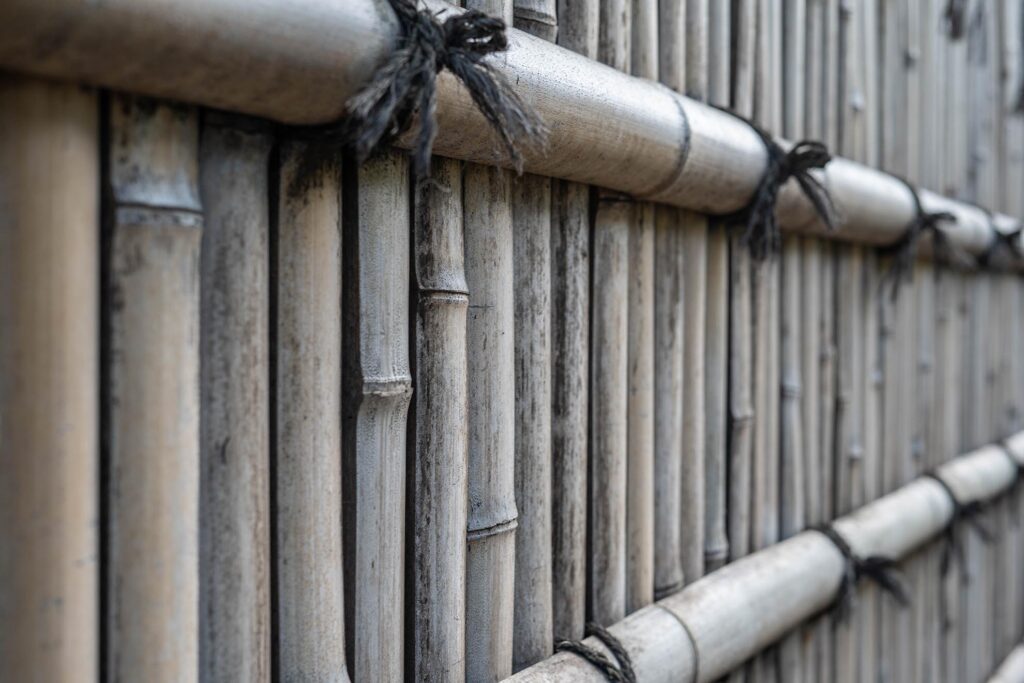Unlike other wood fences, the bamboo fence doesn’t possess toxic deposits that can assist against biodegradation. Therefore the natural durability of real bamboo poles is weak. For most bamboo fences, they only last 2 years and for the treated bamboo fence, they last 5-6 years. The special chemical treatment of bamboo poles is essential but still not able to keep your bamboo fencing pretty for decades.
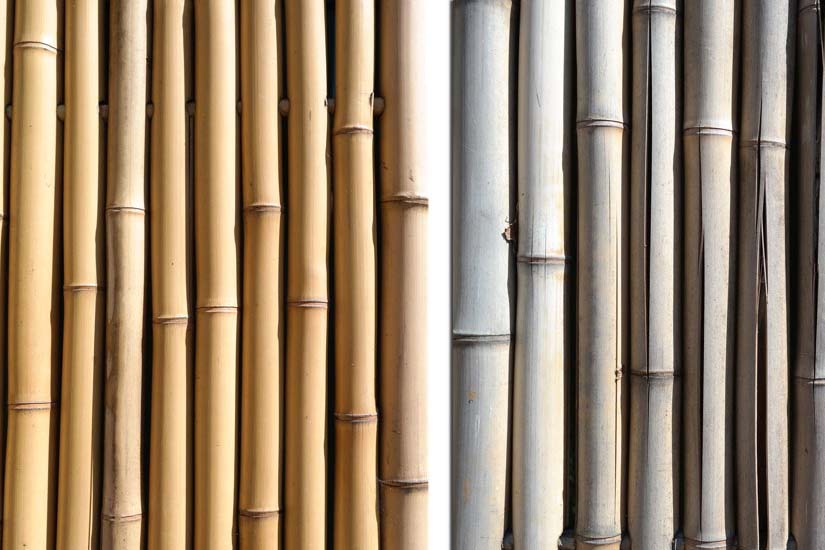
Why does Bamboo Weathering?
Like any other timber materials used for outdoor fencing applications, bamboo will weather, lose its colors and split over time.
Weathering of bamboo began due to the interplay between different climatic conditions, such as differences in climates and relative humidity.
Repeated humidifying and drying of exposed bamboo creates tiny cracks in the surface layer of the bamboo. UV radiations cause the cellulose layer’s disintegration, and finally, wind and dust particles have a sandblasting effect on the bamboo surface. The mixture of all these factors will lead the weathering of outdoor bamboo fencing products.
The massive amounts of starch in bamboo make it highly attractive to mold and fungi, termites, and molds. Unfortunately, they produce much damage during drying, storage, and subsequent application. Bamboos also have insignificant waxes, resins and tannins, but none of these have enough toxicity to enhance their natural durability.
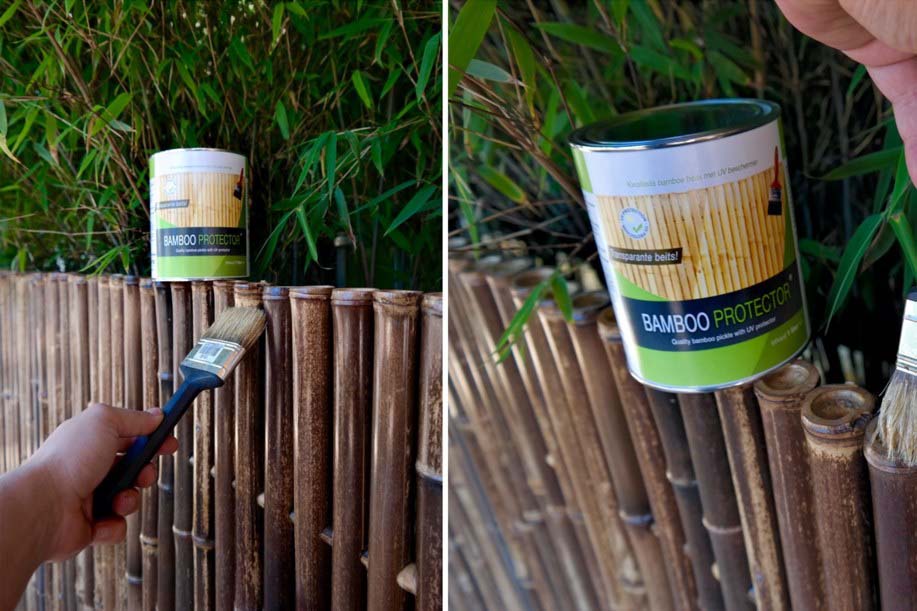
How to treat bamboo fences?
Due to their poor durability, bamboo poles should be treated against potential insect infection shortly after harvest. One of the most popular and effective preservation methods is impregnating bamboo fibers with a mixture of borax or boric acid minerals.
Once all sugars in the bamboo fibers are replaced with salts, they become immune to insects. As a result, treated bamboo fences have a service life of 10 years or more, assuming that natural bamboo sticks are kept from direct contact with sun, rain, or soil. However, the treated bamboo fence is still weak if exposed to sunlight and tropical humidity.
How long does bamboo treatment effective?
Most of the bamboo treatment is done by sealing bamboo with a clear coat or bamboo sealant. This chemical coating will prevent the bamboo in contact with air and humidity. However, the coating will fade and weather too.
After a year, the humid air or rain will start to penetrate through the bamboo, and mold is unavoidable. Extra maintenance and chemical spray care will be required annually by the customer when using bamboo poles for outdoor applications.
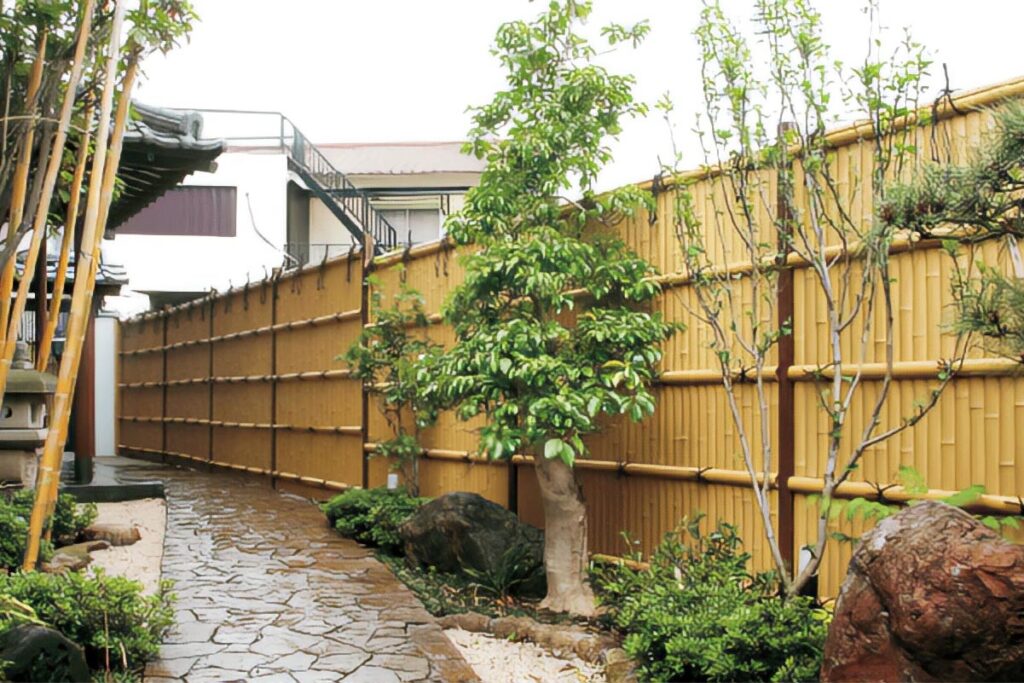
Why do we develop synthetic bamboo fences?
Over the year, we have received tons of inquiries asking for long-lasting synthetic bamboo fence alternatives. Most of these inquiries are from resort owners, theme parks, zoos, and restaurants. Their properties or resorts and themed restaurants were installed and decorated with natural bamboo fences over the whole property. But, unfortunately, after 2-3 years, they all start to fade, discolor, and mold. Natural bamboo fences are very cheap, but the installation costs and maintenance costs are a lot. That’s why they are looking for synthetic alternatives and that’s why we developed artificial plastic bamboo screens. Interested to learn more about why you should choose ONETHATCH bamboo fence and artificial bamboo benefits? Click the link above and check out our articles.
How long do SYNTHETIC bamboo fences last?
Innovative bamboo fencing solution for resorts. They were combined with ultra-durable aluminum fence frames and synthetic bamboo panels made of special reinforced materials; we guarantee your faux bamboo fence to last more than 20 years. We allow you to enjoy bamboo fence beauty for decades with extensive styles and collections to choose from.
We created different bamboo fencing panels based on different region’s tradition and their aesthetics. Some of the fences are used as privacy fences, and some of them are used as bamboo dividers and as a backdrop for the tea ceremony. Click the link to learn more about bamboo fencing applications and their culture.
How to order artificial bamboo fences?
Visit our bamboo fencing category page and shop for your bamboo fencing supplies today!
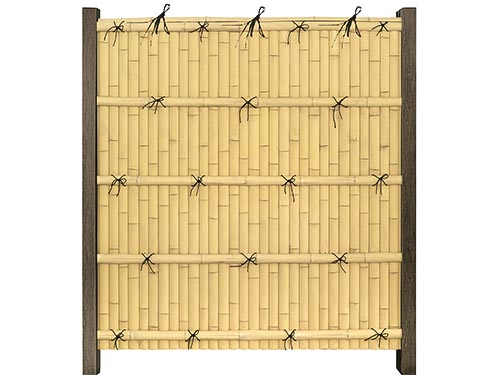
Arrayed of erratic patterns of the bamboo slat, and hold together by horizontal bamboo support poles (oshibuchi).
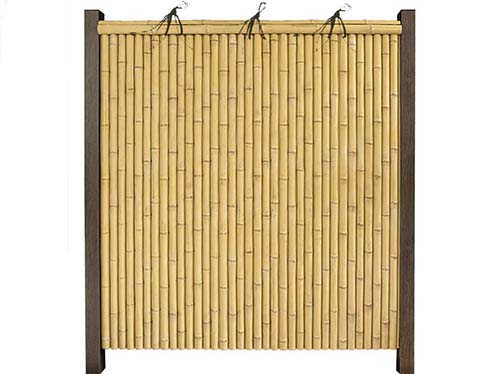
Named after a Japanese grass from its similar appearance, Tokusa Gaki reproduced irregular layouts of bamboos perfectly.
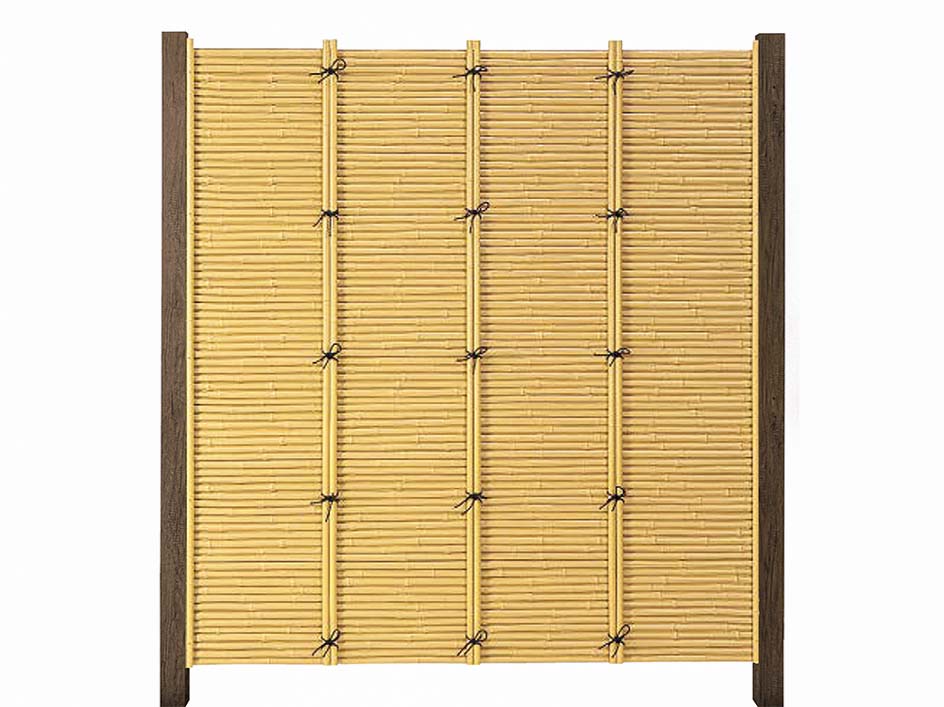
03. Misu Gaki
(御簾垣)
Reproduced the dignified bamboo privacy screen’s beauty that typically found in the homes of nobles in ancient Japan.


